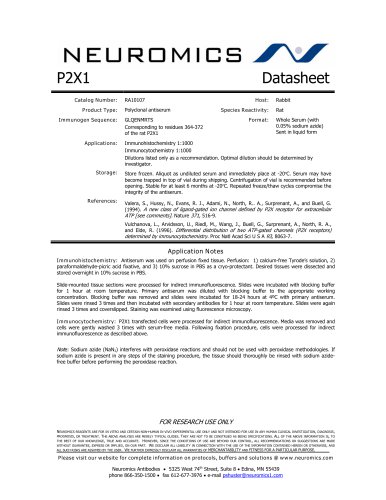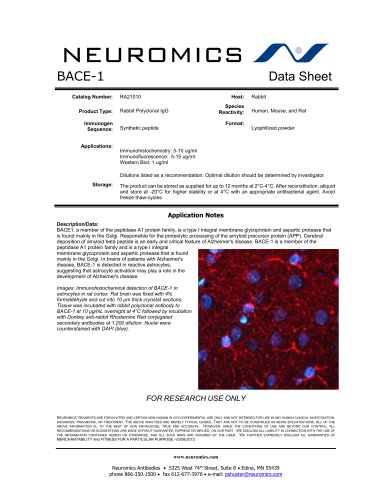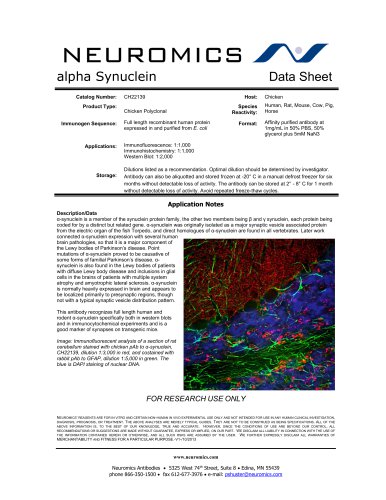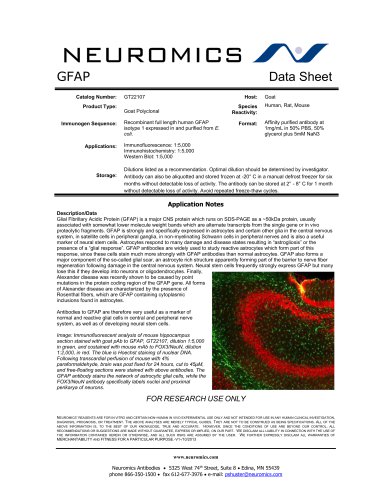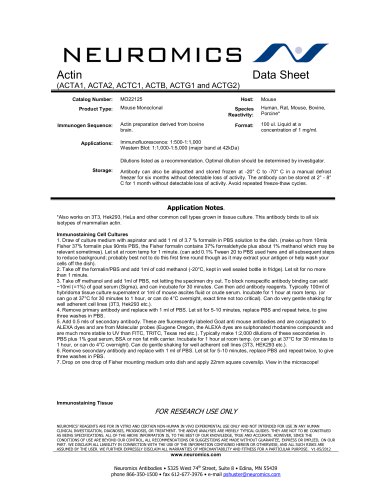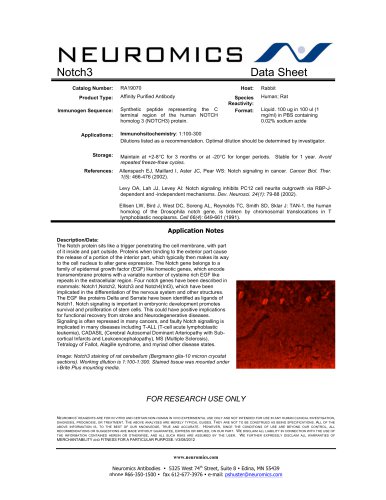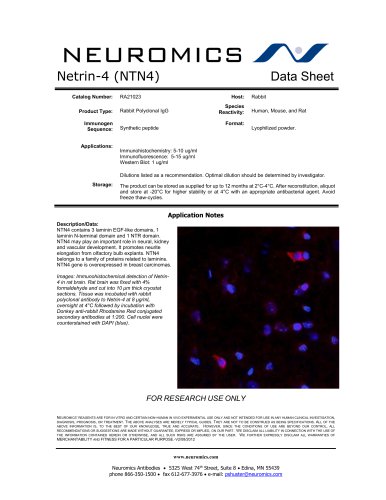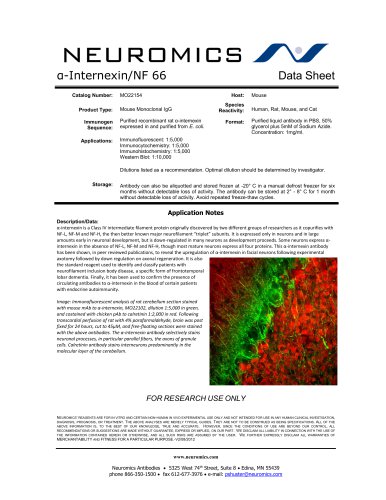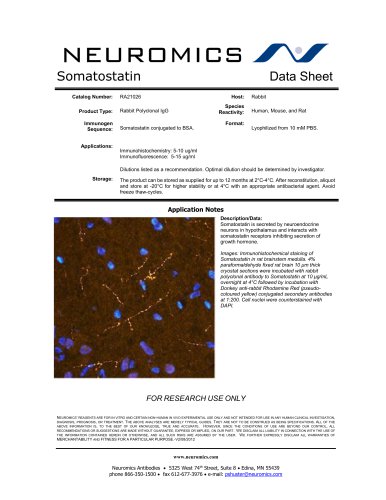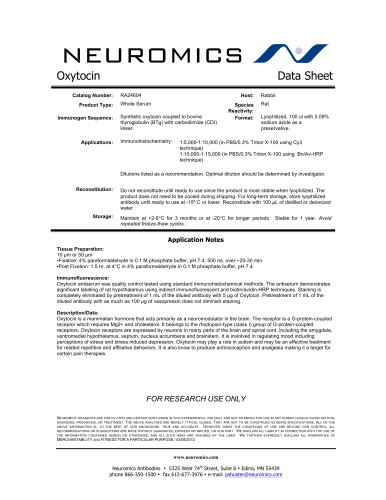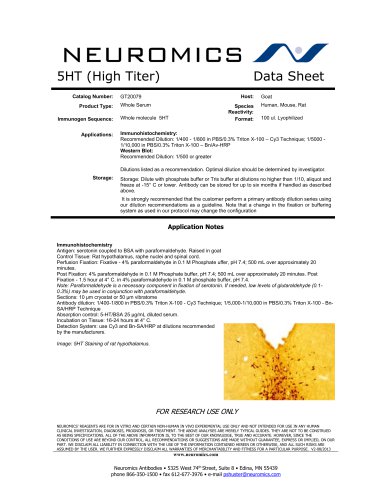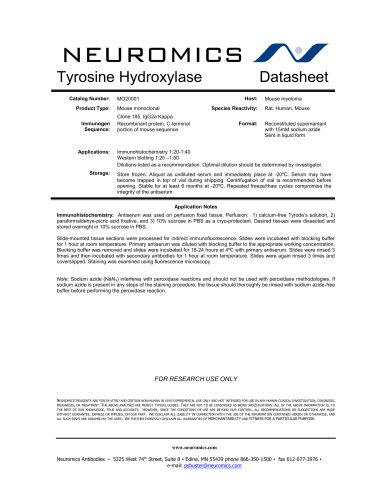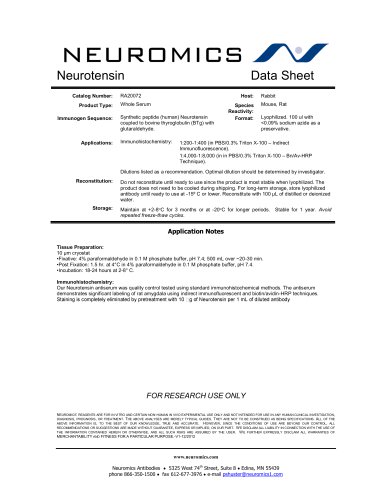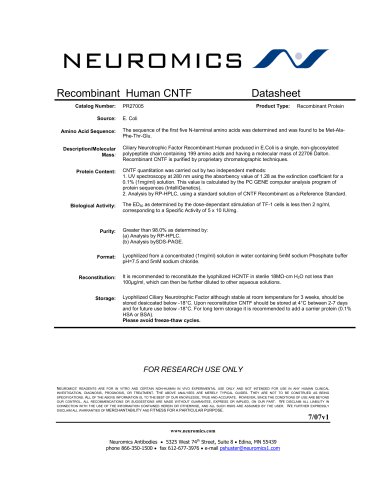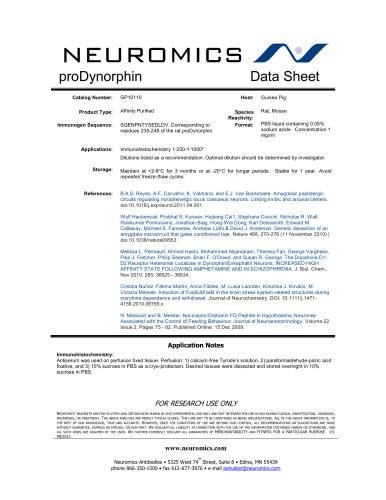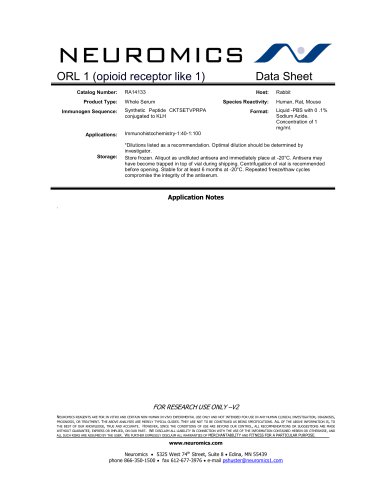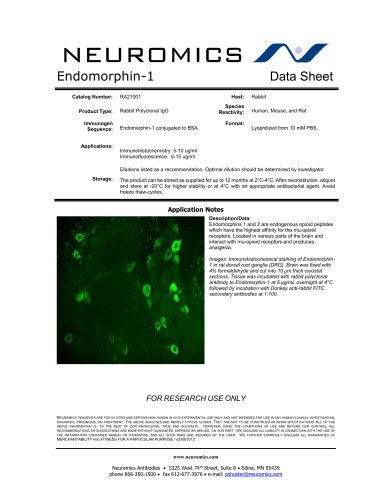
Catalog excerpts

Catalog Number: Product Type: Immunogen Sequence: Polyclonal antiserum Species Reactivity: GLQENMRTS Corresponding to residues 364-372 of the rat P2X1 Rabbit Rat Whole Serum (with 0.05% sodium azide) Sent in liquid form Immunohistochemistry 1:1000 Immunocytochemistry 1:1000 Dilutions listed only as a recommendation. Optimal dilution should be determined by investigator. Store frozen. Aliquot as undiluted serum and immediately place at -20ºC. Serum may have become trapped in top of vial during shipping. Centrifugation of vial is recommended before opening. Stable for at least 6 months at -20ºC. Repeated freeze/thaw cycles compromise the integrity of the antiserum. Valera, S., Hussy, N., Evans, R. J., Adami, N., North, R.. A., Surprenant, A., and Buell, G. (1994). A new class of ligand-gated ion channel defined by P2X receptor for extracellular ATP [see comments]. Nature 371, 516-9. Vulchanova, L., Arvidsson, U., Riedl, M., Wang, J., Buell, G., Surprenant, A., North, R. A., and Elde, R. (1996). Differential distribution of two ATP-gated channels (P2X receptors) determined by immunocytochemistry. Proc Natl Acad Sci U S A 93, 8063-7. Application Notes Immunohistochemistry: Antiserum was used on perfusion fixed tissue. Perfusion: 1) calcium-free Tyrode’s solution, 2) paraformaldehyde-picric acid fixative, and 3) 10% sucrose in PBS as a cryo-protectant. Desired tissues were dissected and stored overnight in 10% sucrose in PBS. Slide-mounted tissue sections were processed for indirect immunofluorescence. Slides were incubated with blocking buffer for 1 hour at room temperature. Primary antiserum was diluted with blocking buffer to the appropriate working concentration. Blocking buffer was removed and slides were incubated for 18-24 hours at 4ºC with primary antiserum. Slides were rinsed 3 times and then incubated with secondary antibodies for 1 hour at room temperature. Slides were again rinsed 3 times and coverslipped. Staining was examined using fluorescence microscopy. Immunocytochemistry: P2X1 transfected cells were processed for indirect immunofluorescence. Media was removed and cells were gently washed 3 times with serum-free media. Following fixation procedure, cells were processed for indirect immunofluorescence as described above. Note: Sodium azide (NaN3) interferes with peroxidase reactions and should not be used with peroxidase methodologies. If sodium azide is present in any steps of the staining procedure, the tissue should thoroughly be rinsed with sodium azidefree buffer before performing the peroxidase reaction. FOR RESEARCH USE ONLY NEUROMICS REAGENTS ARE FOR IN VITRO AND CERTAIN NON-HUMAN IN VIVO EXPERIMENTAL USE ONLY AND NOT INTENDED FOR USE IN ANY HUMAN CLINICAL INVESTIGATION, DIAGNOSIS, PROGNOSIS, OR TREATMENT. THE ABOVE ANALYSES ARE MERELY TYPICAL GUIDES. THEY ARE NOT TO BE CONSTRUED AS BEING SPECIFICATIONS. ALL OF THE ABOVE INFORMATION IS, TO THE BEST OF OUR KNOWLEDGE, TRUE AND ACCURATE. HOWEVER, SINCE THE CONDITIONS OF USE ARE BEYOND OUR CONTROL, ALL RECOMMENDATIONS OR SUGGESTIONS ARE MADE WITHOUT GUARANTEE, EXPRESS OR IMPLIED, ON OUR PART. WE DISCLAIM ALL LIABILITY IN CONNECTION WITH THE USE OF THE INFORMATION CONTAINED HEREIN OR OTHERWISE, AND ALL SUCH RISKS ARE ASSUMED BY THE USER. WE FURTHER EXPRESSLY DISCLAIM ALL WARRANTIES OF MERCHANTABILITY AND FITNESS FOR A PARTICULAR PURPOSE. Please visit our website for complete information on protocols, buffers and solutions @ www.neuromics.com Neuromics Antibodies • 5325 West 74th Street, Suite 8 • Edina, MN 55439 phone 866-350-1500 • fax 612-677-3976 • e-mail pshuster@neur
Open the catalog to page 1All Neuromics catalogs and technical brochures
-
RA21010
1 Pages
-
CH22139
1 Pages
-
RA21027
1 Pages
-
GT22107
1 Pages
-
MO22125
4 Pages
-
RA19070
1 Pages
-
RA21023
1 Pages
-
MO22154
1 Pages
-
RA30051
2 Pages
-
RA21026
1 Pages
-
RA24604
2 Pages
-
RA18003
3 Pages
-
GT20079
1 Pages
-
RA21003
1 Pages
-
MO20001
2 Pages
-
RA20072
2 Pages
-
TRPA1
1 Pages
-
RA25034
2 Pages
-
PR27005
1 Pages
-
proDynorphin
2 Pages
-
ORL 1
1 Pages
-
Endomorphin 1
1 Pages
-
beta-Endorphin
1 Pages

